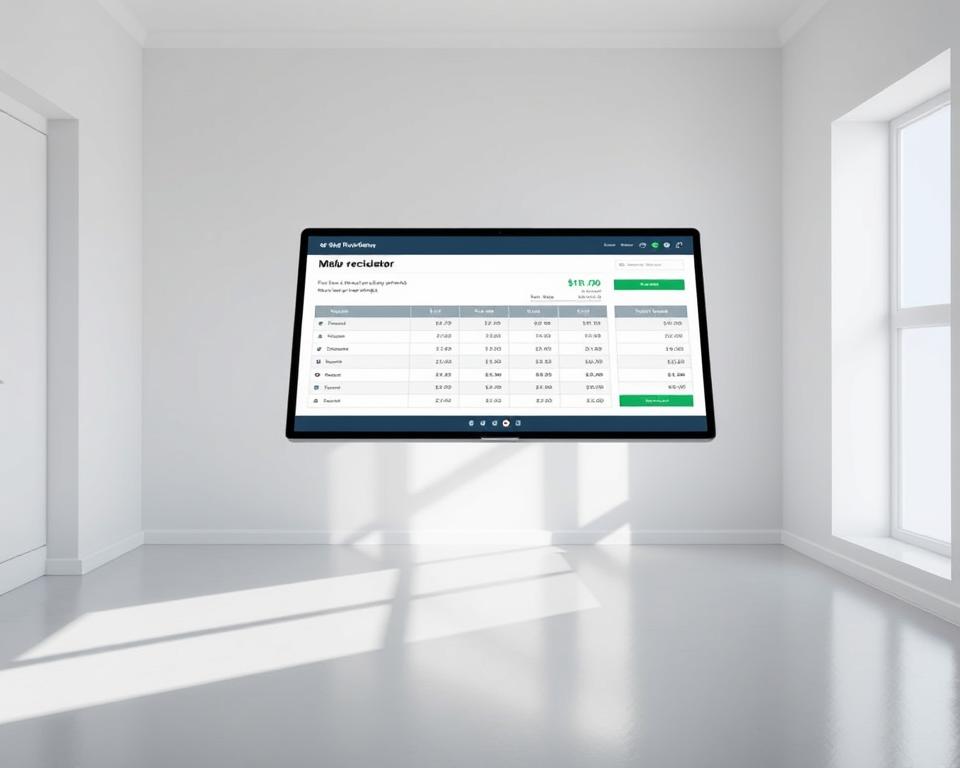Dealing with unexpected fungal growth in your house can feel overwhelming. How do you even begin to plan a budget for something so unpredictable? Traditional methods often involve lengthy consultations or vague quotes, leaving homeowners frustrated. But what if there was a smarter way to calculate expenses without wasting time?
Our platform offers a streamlined solution designed for U.S. residents. By integrating verified pricing data from industry leaders like Homewyse and iDry Columbus, this tool provides transparent, real-time estimates tailored to your situation. Whether you’re facing minor discoloration or extensive damage, it factors in square footage, severity levels, and regional labor rates to deliver accurate projections.
Why spend hours researching averages when you can get answers in moments? This resource prioritizes simplicity, making it ideal for urgent scenarios. Just input basic details about your space and the issue’s scope—no technical expertise required. Within seconds, you’ll have a clear financial roadmap to address the problem efficiently.
Key Takeaways
- Access immediate, data-backed estimates using trusted sources like Homewyse.
- Customize calculations based on property size, contamination level, and ZIP code.
- Save time with a user-friendly interface requiring minimal input.
- Gain clarity for emergency scenarios needing swift action.
- Compare regional pricing variations to avoid overpaying.
Introduction to Mold Remediation Cost Challenges
Unseen moisture issues can spiral into major financial headaches. Property damage from microbial growth often starts small but quickly impacts walls, flooring, and air quality. Without proper assessments, these problems worsen—leading to pricier solutions down the line.
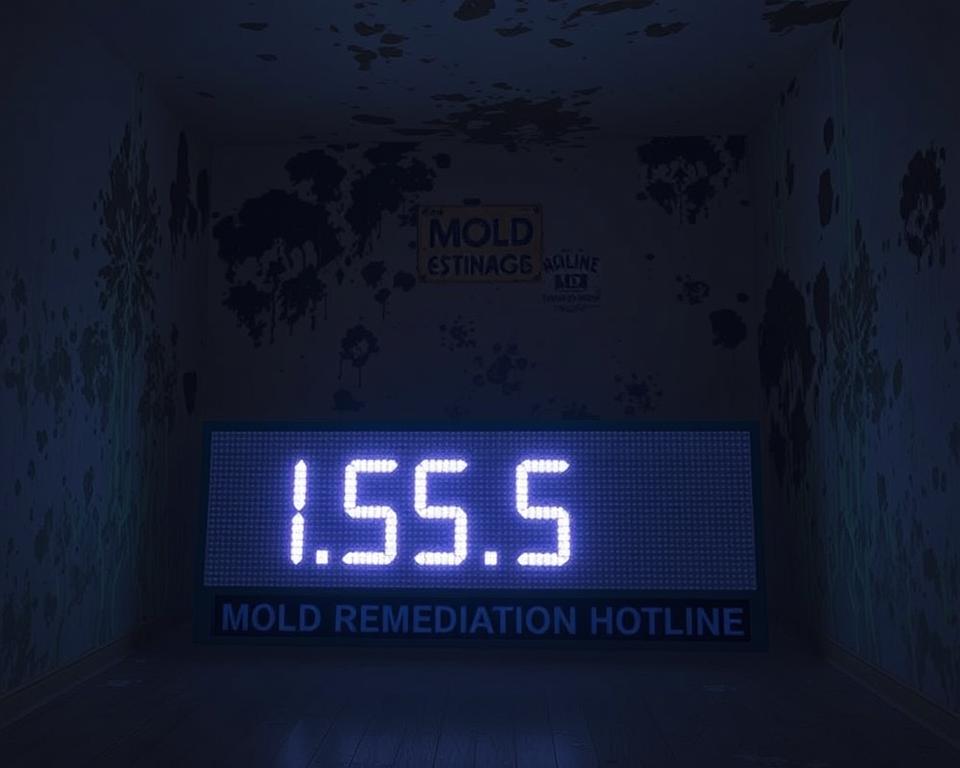
Understanding the Impact on Property
Fungal colonies compromise building materials and indoor environments. Warped drywall, stained ceilings, and musty odors signal deeper issues. Left unchecked, spores spread through HVAC systems, affecting multiple rooms.
| Factor | Impact Level | Average Cost Range |
|---|---|---|
| Affected Square Footage | High | $500-$7,000 |
| Contamination Severity | Critical | $1,200-$18,000 |
| Location (e.g., attic vs. basement) | Moderate | $300-$5,000+ |
| Inspection Depth | Variable | $200-$1,500 |
Why Precision in Estimates Matters
Inaccurate projections create budget shortfalls. A 2023 industry survey revealed 68% of homeowners faced unexpected charges due to overlooked contamination zones. Detailed evaluations prevent this by mapping affected areas and required treatments.
Thorough inspections identify hidden moisture sources. As Environmental Protection Agency guidelines state: “Effective containment requires understanding both visible growth and underlying causes.” This approach reduces repeat visits and secondary damage risks.
How Our Instant Mold Remediation Cost Calculator Online Works
Transparent pricing begins with tailored inputs. Our tool, developed in collaboration with iDry Columbus, simplifies budgeting by breaking down complex variables into easy-to-understand steps. Start by entering basic details about your space and the fungal issue’s scope—no guesswork required.
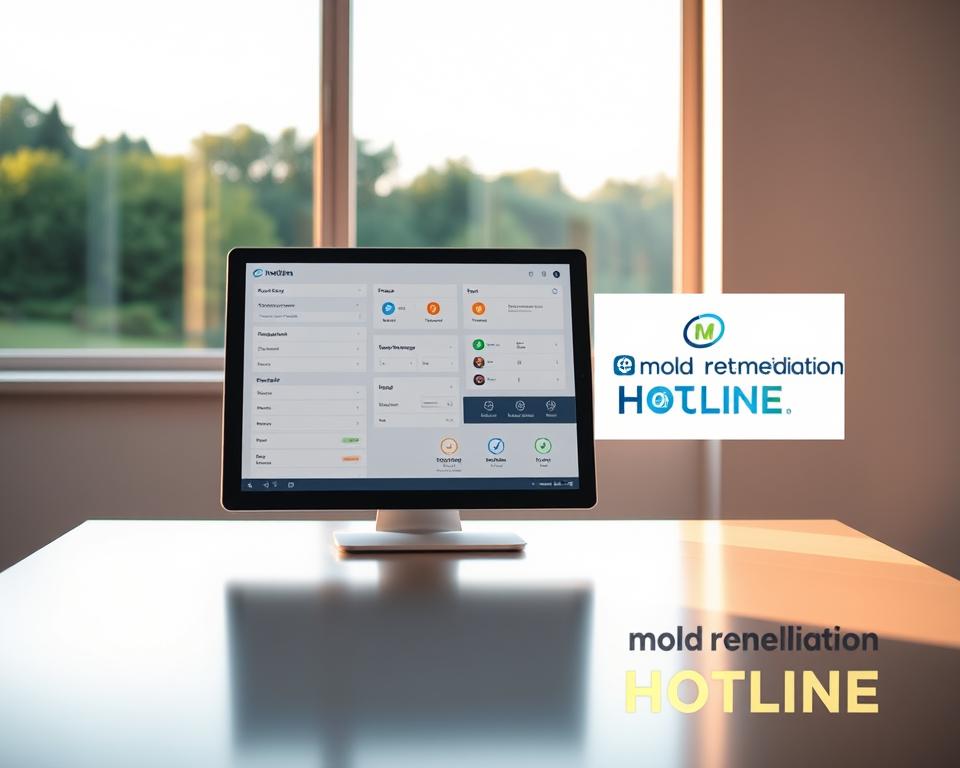
Inputting Your Project Details
First, input your ZIP code to activate localized pricing algorithms. Next, specify the affected area’s size in square feet. The platform then asks about visible growth patterns, musty odors, or moisture sources. These details help our advanced systems assess severity levels accurately.
For example, a 200-square-foot basement with water damage triggers different calculations than a 50-square-foot bathroom spot. Dropdown menus and checkboxes make it easy to describe your situation without technical jargon.
Real-Time Updates for Custom Estimates
As you adjust inputs, the calculator instantly recalculates costs using live data from regional contractors and suppliers. It factors in cost per square foot rates, labor fees, and material trends. This ensures estimates reflect current market conditions, not outdated averages.
The tool also flags potential hidden expenses, like air duct cleaning or drywall replacement. By aligning results with your specific project needs, it delivers actionable insights for informed decision-making—all within seconds.
Features and Benefits of the Cost Calculator
Navigating fungal issues requires confidence in your budget planning. Our tool combines Homewyse’s unit cost methodology with real-time market data to deliver precise projections. This approach eliminates guesswork while aligning with industry standards for transparent reporting.
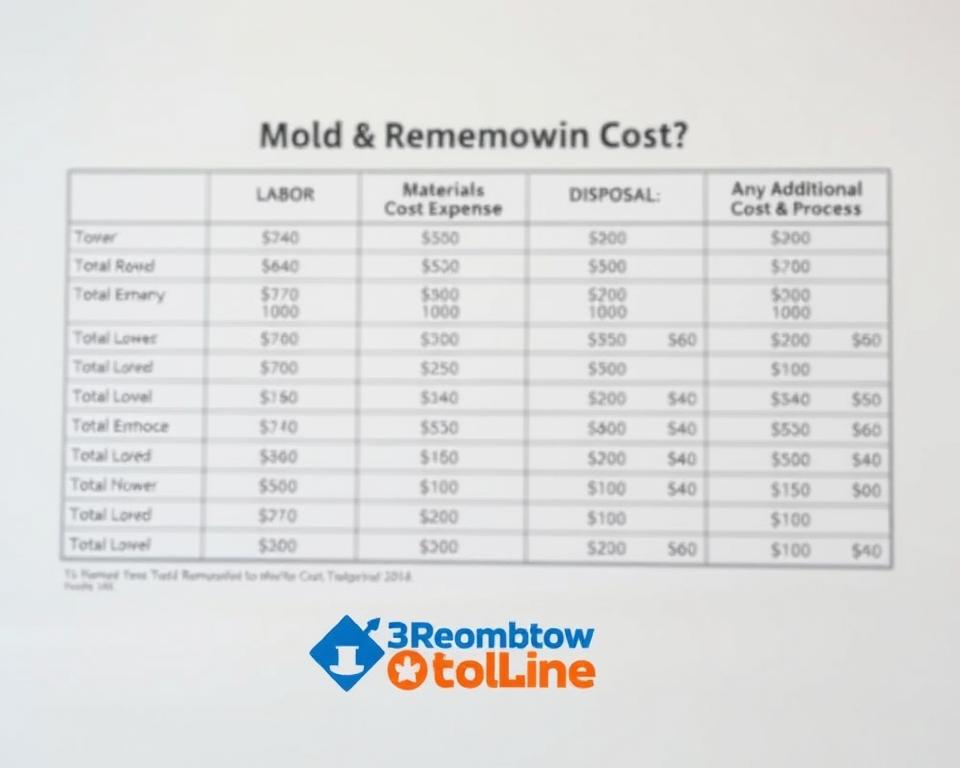
Simplicity and Accuracy in Estimations
The interface prioritizes speed without sacrificing detail. Enter basic details like room dimensions and visible growth patterns. Behind the scenes, algorithms analyze regional labor rates and material costs from verified suppliers.
Results update instantly as you adjust inputs. For example, selecting “water-damaged drywall” triggers specific equipment and labor calculations. This granularity ensures your estimate reflects actual project needs, not generic averages.
Transparent Pricing for Informed Decisions
Every quote breaks down expenses into clear categories: labor, protective gear, antimicrobial treatments, and disposal fees. Homewyse’s guidelines ensure no hidden charges creep into your total. See how location impacts rates or how removal methods affect material choices.
Compare options side-by-side, from surface cleaning to full structural repairs. This empowers homeowners to prioritize tasks based on budget and urgency. As one user noted: “Finally, a guide that explains where every dollar goes.”
Key Factors Influencing Mold Remediation Pricing
Understanding what drives cleanup expenses helps homeowners prepare better. Multiple elements shape final quotes, from structural details to environmental risks. Let’s explore the core variables professionals evaluate during assessments.
Size of the Affected Area
The physical size directly impacts material and labor needs. A 100-square-foot bathroom patch might cost $1,200, while a 500-square-foot basement could exceed $6,000. Contractors often use cost per square foot models, ranging from $10 to $25 based on complexity.
| Location | Average Rate per Sq.Ft. | Typical Job Size |
|---|---|---|
| Attic | $18–$22 | 150–400 sq.ft. |
| Basement | $12–$18 | 200–800 sq.ft. |
| Bathroom | $20–$25 | 50–150 sq.ft. |
Severity and Location Challenges
Hidden growth behind walls or under flooring increases work complexity. A small attic infestation requiring insulation replacement often costs more than visible surface stains. According to industry reports, severe cases in tight spaces take 40% longer to resolve.
Basements and crawl spaces pose unique cleaning difficulties due to poor ventilation. These area conditions often demand specialized equipment, raising project totals. Even minor job scopes become costly when dealing with toxic spore types or structural repairs.
By evaluating both size and contamination depth, homeowners gain realistic expectations. Always request detailed assessments—surface-level quotes rarely capture hidden complications.
Step-by-Step Guide to Calculating Your Mold Cleanup Costs
Accurate budgeting starts with precise inputs. Our tool simplifies the estimation process into manageable steps, combining regional data with customizable service options. Here’s how to transform raw numbers into actionable insights.
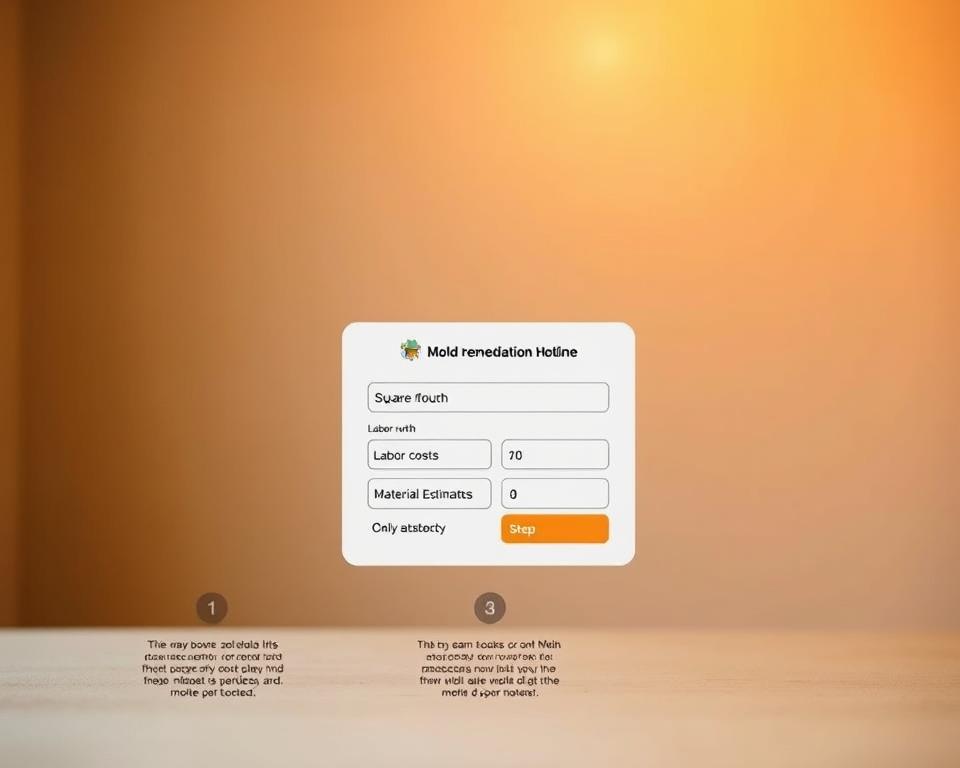
Entering Zip Code and Project Size
Begin by typing your ZIP code. This activates localized pricing from contractors like iDry Columbus. Next, measure the affected area’s square footage. A 150-square-foot bathroom requires different resources than a 500-square-foot basement.
The system cross-references your inputs with Homewyse’s databases. It adjusts for regional labor rates and material availability. For example, coastal regions often face higher costs due to humidity challenges.
Selecting Optional Services and Upgrades
Tailor your estimate by choosing add-ons. Air quality testing or drywall replacement can impact your total. Each selection triggers real-time adjustments based on verified supplier quotes.
| Zip Code | Project Size (sq.ft.) | Average Estimate |
|---|---|---|
| 90210 | 200 | $3,200–$4,800 |
| 10001 | 350 | $5,600–$8,400 |
| 60611 | 75 | $1,100–$1,900 |
Inspection reports refine calculations further. Upload findings to adjust for hidden moisture or structural damage. The process includes multi-step verification to ensure quotes align with industry standards.
Whether you’re tackling a DIY fix or planning professional help, this guide adapts to your skill level. Save time while gaining clarity on every dollar spent—no surprises, just results.
Detailed Breakdown of Cost Components
Breaking down expenses for microbial cleanup requires clarity on three core elements. Labor, supplies, and specialized tools form the foundation of most quotes. Let’s explore how each contributes to your final investment.
Labor, Materials, and Equipment Expenses
Labor typically accounts for 40–60% of total costs. Certified technicians handle containment setup, removal procedures, and post-cleaning inspections. Homewyse data shows hourly rates range from $45–$85, depending on regional demand.
Materials include antimicrobial sprays, protective gear, and replacement drywall. A 300-square-foot job might use $200–$400 in sealants and $150–$300 in disposal bags. Equipment rentals like air scrubbers or dehumidifiers add $50–$150 daily.
Additional Fees and Local Adjustments
Unexpected expenses often arise from permit requirements or hazardous waste disposal. Urban areas may charge $75–$200 for environmental compliance checks. Transportation fees apply if crews travel beyond standard service zones.
| Cost Factor | Typical Range | Included in Calculator? |
|---|---|---|
| Permits | $50–$300 | Yes (location-based) |
| Structural Repairs | $1.50–$4.50/sq.ft. | Optional add-on |
| Emergency Services | +15–25% | Time-of-day toggle |
Our tool flags potential issues like hidden moisture pockets or asbestos risks. These variables adjust estimates dynamically, mirroring real-world cleaning scenarios. By separating line items, homeowners see exactly where funds go—from basic removal to deep sanitization steps.
Localized Estimates for United States Homeowners
Geographic factors play a crucial role in determining cleanup expenses. Our tool analyzes regional labor rates, climate patterns, and material availability to deliver precise estimates for your specific location. This approach ensures your quote reflects actual market conditions rather than national averages.
Regional Cost Variations and Multipliers
Urban centers like New York City often face 20–35% higher cost per square rates compared to rural Ohio. iDry Columbus data shows coastal areas require specialized treatments for humidity control, while arid regions prioritize air filtration. These adjustments get baked into your estimate through location-based multipliers.
| Location | Cost per Sq.Ft. | Service Multiplier |
|---|---|---|
| New York Metro | $22–$28 | 1.3x |
| Columbus, OH | $15–$20 | 1.0x |
| Rural Midwest | $12–$16 | 0.8x |
HVAC system evaluations add another layer of customization. Homes in Florida might need duct sanitization due to high moisture, while Minnesota properties often require insulation upgrades. These location-specific needs automatically update your projection when entered.
By combining ZIP code data with real contractor pricing, our tool helps homeowners avoid overpaying. A 300-square-foot job in Atlanta could cost $4,500, while the same work in Tulsa might total $3,200. Always verify localized estimates to align budgets with regional realities.
Expert Advice and Trusted Local Professionals
Choosing the right team for fungal cleanup requires careful vetting. Not all contractors meet industry standards for safety or effectiveness. Prioritize firms with proven track records and proper credentials to protect your home—and health.
Guidance on Hiring Certified Experts
Always verify certifications like IICRC (Institute of Inspection Cleaning and Restoration Certification) or ACAC (American Council for Accredited Certification). These credentials ensure technicians follow industry-approved methods. Ask for proof of insurance and references from past clients—reputable companies provide this willingly.
The U.S. Department of Housing and Urban Development advises:
“Proper containment and disposal procedures prevent cross-contamination during removal projects.”
Look for professionals usingadvanced systemslike HEPA vacuums and infrared cameras duringinspections.
Ensuring Safety and Compliance During the Process
Confirm adherence to OSHA guidelines and local regulations. Teams should wear protective gear and isolate work areas with plastic sheeting. Request a written plan detailing safety protocols and waste disposal methods.
Post-cleanup verification matters. Third-party testing ensures no spores remain airborne. Many states require clearance certificates before rebuilding—a critical detail often overlooked. By following this guide, homeowners achieve lasting results without compromising safety.
Conclusion
Smart budgeting for home maintenance starts with understanding every dollar’s purpose. Our platform combines Homewyse’s verified pricing models with iDry Columbus’s regional insights to deliver precise estimates. By simplifying the process, homeowners gain clarity on labor rates, material needs, and hidden factors like HVAC system evaluations.
The step-by-step tool breaks down expenses by square foot, contamination severity, and location-specific adjustments. Transparent price breakdowns help you compare options without guesswork—whether addressing a small bathroom patch or extensive basement damage.
Timely cleanup protects your property’s value and indoor air quality. Armed with accurate projections, you can prioritize tasks confidently and avoid financial surprises. Don’t let uncertainty delay critical repairs—use our resource today to map your next steps efficiently.
Ready to take control? Request a professional inspection or detailed quote tailored to your space. Investing time now saves money and stress later, ensuring lasting results for your home and health.
